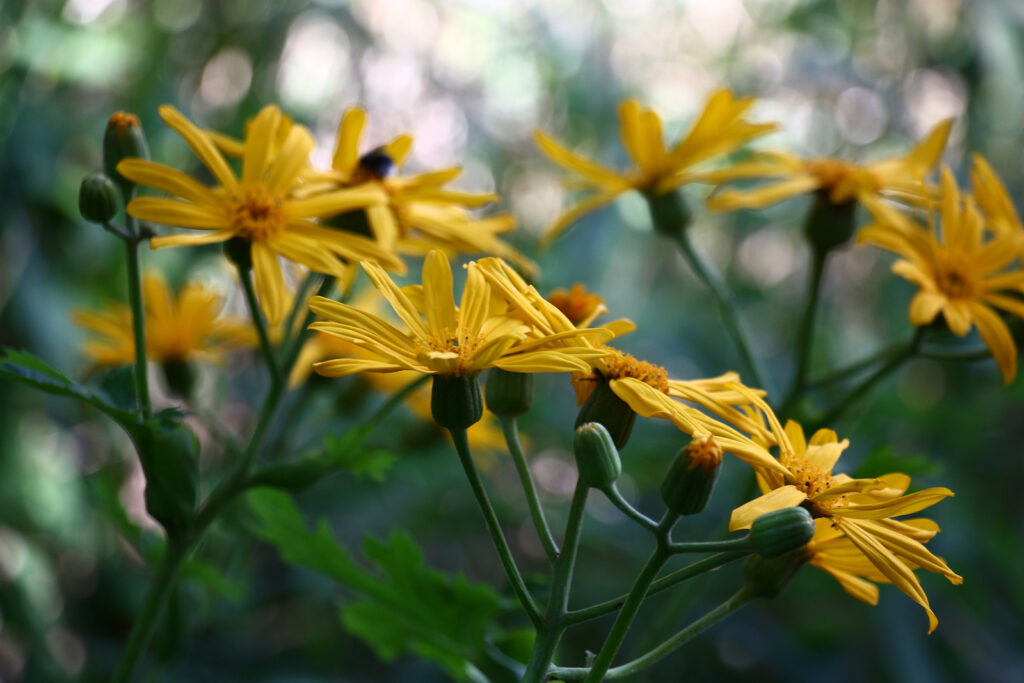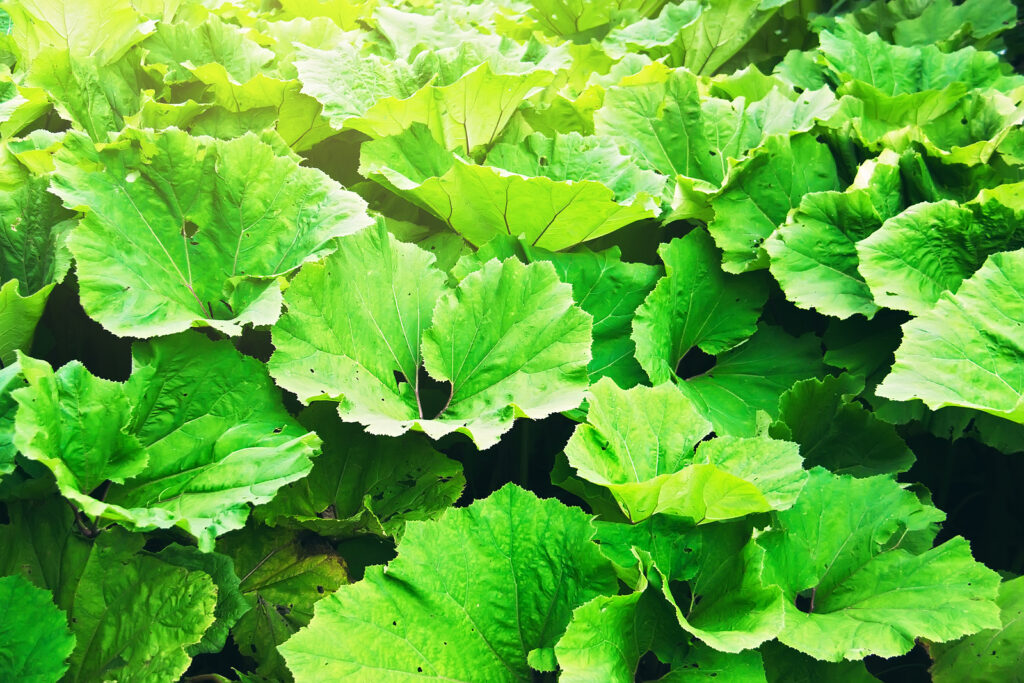Ligularia–commonly called leopard plant–bears large, orange-yellow daisy-like flowers from midsummer to early fall. The plant is an upright, clump-forming perennial with large, leathery, heart-shaped rich green leaves.
Ligularia is a genus of perennials with broad basal leaves showily marked and numerous yellow flowerheads on 5-foot stems. It is a striking subject in borders and is easily grown from seed.
Ligularia grows in ordinary garden soil.
Ligularia is a genus of about 150 species of large, robust, often coarse perennials.

Get to know Ligularia
- Plant type: Perennial
- Growing Zones and range: Zones 5 to 8
- Hardiness: Hardy to -30°F (-34°C)
- Height and width: 3 to 4 feet (1-1.2m) tall; 3 to 5 feet (1-1.5m) wide
- Foliage: Basal leaves can be oblong or elliptic or rounded
- Flowers: Racemes of a few or many daisy-like
- Flower colors: Yellow, orange
- Bloom time: Summer
- Uses: Shady beds, woodland garden, near water, massed in groups of 5 or more
- Common name: Ligularia, leopard plant
- Botanical name: Ligularia spp.
- Family: Asteraceae
- Origin: moist meadows and grasslands in Central and East Asia
Where to plant Ligularia
- Plant Ligularia in light, afternoon shade in Zone 5 and in hot regions in Zones 6-8.
- Grow Ligularia in humus-rich, moist to wet soil.
Ligularia uses and companions
- Grow Ligularia in a mixed or herbaceous border.
- Use Ligularia in a naturalistic, shady, wet-to-boggy site along a pond or stream.
- Good companions for Ligularia include Aruncus dioicus, Cimicifuga, Eupatorium, Iris, Lobelia cardinalis.

When to plant Ligularia
- Set Ligularia in the garden in spring; add aged compost to the planting bed in advance of planting.
- Sow the seed of species Ligularia in autumn.
Planting and spacing Ligularia
- Space Ligularia 2 to 3 feet apart; mass plants in groups of 5 or more.
- Sow seed 1/8 inch deep in evenly prepared soil.
How to water and feed Ligularia
- Ligularia needs ample water; do not let the soil dry out.
- Fertilize ligularia with an all-purpose fertilizer every 6 weeks or apply a slow-release fertilizer in spring.
Ligularia care
- Mulch around ligularia to conserve soil moisture.
- Trim off spent flower spikes after blooming.
- Leaves may droop in warm, humid weather; leaves will recover when the humidity drops.
- Protect plants from slugs and snails.
Ligularia pests and diseases
- Slugs and snails may damage emerging leaves in spring.

Ligularia propagation
- Ligularia seeds germinate in14-42 days at 55°F to 65°F (13°-18°C).
- Sow the seed of species in containers outdoors in autumn or spring
- Divide species or cultivars in spring after flowering.
Ligularia varieties to grow
- Ligularia dentata: grown for attractive roundish leaves; sends up 3 to 5 feet stems topped by heads of orange daisies; cultivar ‘Desdemona’ has round, deep-red spring leaves; large yellow daisies in clusters on stems 1 to 2 feet.
- L. hessei ‘Gregynog Gold’ grows to 6 feet tall and bears conical spikes of yellow-orange flowers.
- L. przewalskii similar to L. stenocephala: bears slender dense racemes of yellow flower heads; grows to 6 feet tall; palmately lobed leaves.
- L. stenocephala is known for the cultivar ‘Rocket’ which has pointed, serrated leaves; and yellow flowers on spikes to 5 feet tall.
- L. tussilaginea is a houseplant in all zones and grown outdoors in Zones 6 to 9; bears yellow ray flower heads; cultivars include ‘Aureo-marginata’ called leopard plant for its blotched leaves; ‘Argentea’ and ‘Crispata.’
- L. wilsoniana, giant groundsel, bears columnar spikes of golden yellow flowers on 6-foot stems.















